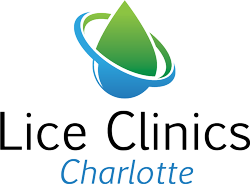Lice Prevention for Summer Camps and Childcare Centers: A Comprehensive Guide

With summer upon us, some children will be creating lasting memories with their friends in summer camps and child care centers. While as a parent you’re excited to get them out of the house, there could also be some concern when it comes to head lice.
According to the Centers of Disease Control, an estimated 6-12 million head lice infestations occur yearly in the U.S. among children ages 3-11. In fact, preschool-aged children are reportedly the most at risk for head lice infestation. There are many reasons why this is the case, and we’ll discuss those further. Treating head lice is somewhat simple with the proper tools and professional guidance.
However, parents and childcare providers should communicate and work together to help prevent a head lice breakout. Below we will discuss what steps each group can take to minimize the possibility of an infestation, what to do when a positive case of head lice occurs, and what resources caretakers can use to treat head lice as soon as possible.
What Are Head Lice?
Maybe you know absolutely nothing about head lice, or maybe you do from personal experience. Regardless, it’s important to go over the basic facts about tiny pests in order to understand how parents and care providers can properly treat a case if needed.
Firstly, head lice are tiny bugs (about the size of a sesame seed) that feed off of blood from the scalps of people. An adult head louse can live for about 30 days with a constant food supply and a female head louse can lay about 6-10 eggs a day. An egg, also known as a nit, will hatch after 8-9 days where it will turn into a Nymph. At this stage, the Nymph will grow for about 9-12 days before it fully matures. Lice tend to be light in color but are also known to match the color of the hair. If you have darker hair then the lice on your scalp could be darker in color compared to someone with light or blonde hair.
Lice also have these tiny hook-like appendages on the ends of each of their six legs that allow them to hang onto hair strands relatively well. When nits are laid, they are usually ¼ of an inch away from the base of the scalp. This makes removing them with a regular hair tool impossible and a special comb is required. Their physiological components coupled with their high transmission rate are what make a bad infestation challenging to treat.
Myths
Now that there is a basic understanding of what head lice physically are, let’s briefly discuss some common myths about them.
- Head Lice Do Not Spread Diseases: Although the tiny pests can lead to irritation by scratching the scalp and one may develop an infection from the scratching, the lice themselves do not spread disease or illnesses.
- Head Lice Are Not Fleas: They Cannot Jump: As previously mentioned, head lice have hook-like appendages that allow them to grip a hair strand firmly. Once attached, they can only be removed by a professional at our Lice Clinic in Charlotte, North Carolina. Head lice crawl on the scalp and are in no way similar to fleas, they cannot jump from person to person.
- Swimming Does Not Spread Head Lice: Not only are the chlorine levels used in most community swimming pools not strong enough to kill head lice, but submerging them underwater alone will not get rid of them. They can hang onto the hair with their hooks and because nits are so close to the scalp, water won’t simply remove them either. In other words, once on the hair, they are staying.
- Head Pieces And Wigs Do Not Spread Head Lice: Is it common? No. Is it possible, yes. Again, head lice need a constant blood supply in order to remain alive. The nature of wigs requires a protective piece, called a wig cap, in order to keep the natural hair safe. It provides a barrier to whatever tools and manipulation tactics one might use for the wig itself. Head lice cannot go longer than a day without feeding, so transmission from a wig or headpiece is extremely low.
How To Avoid Lice: Parents and Child Care Facilities
Myths busted and basic knowledge acquired, we can now discuss how parents and childcare facilities can avoid lice.
Parents
Firstly, understand that completely avoiding head lice for your child is not 100 percent possible. Being that the target demographic of these pests is those who are extremely young (higher risk of exposure), prevention is even more challenging. But, all hope is not lost as you can take a few steps to limit their exposure.
Encourage them to not share hair brushes, pillows (if they have nap time), or other headgear while out of your care. This is the easiest way for head lice to spread between hosts. Machine wash in hot water any clothing or linens your child uses. Dry on high heat. Vacuum the floor and furniture frequently in places where your child lays. There is no need for the use of chemicals or professional house cleaning services.
Childcare Facilities
Again, it is difficult to completely prevent children from catching head lice but there are a few things daycare centers can do in order to prevent head lice from infecting multiple children in a short amount of time.
Firstly, discourage children from sharing personal belongings, such as hats and hair brushes, with other children. This will reinforce the guidance they are already receiving from parents at home. Coats and other articles of clothing/belongings should not be shared between children and should be evenly spaced between them to prevent them from touching. If you have dress-up clothes or costumes, invest in disposable items or have them regularly cleaned. Carpeted areas should be vacuumed as frequently as possible. Encourage parents to have their children screened if there are a growing number of children reporting head lice infestations in your facility.
While not 100 percent preventable, the steps both childcare facilities and parents can take on how to avoid lice are relatively easy and simple. Treatment is simple as well and if taken care of as soon as possible, it can be just as easy as prevention.
The Lice Clinic Difference
It’s about to be the summer season and we know that your children might be spending some time out of your care in summer camps or child care centers. This means that they will be at higher risk of catching head lice.
We understand that although not deadly, head lice can be extremely annoying for families and their children. If left untreated without the proper professional care, the infestation can worsen and spread in a very short amount of time. At Lice Clinics Charlotte, we understand the importance of treating the infestation as quickly and efficiently as possible. Our office is not just home to the top professionals in the state, but also the latest technology in the world of treating head lice.
Our products, methods, and treatments are free of toxins and pesticides. If you add that with the years of experience we have in leading the industry, you’ll understand why we say that there is no need for a follow-up appointment. We eliminate head lice immediately and effectively so that our clients need to see us once. That’s the Lice Clinics Charlotte’s difference.
To schedule an appointment, review more facts about head lice, and explore treatment options visit our website today or give us a call at 910-264-7141.
